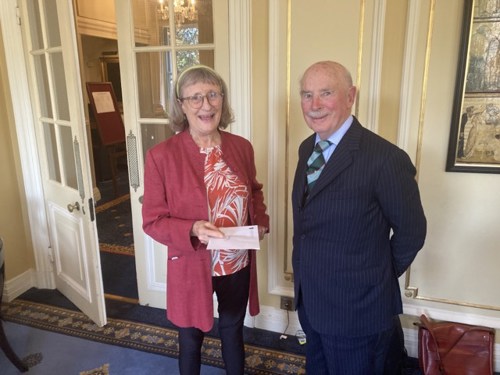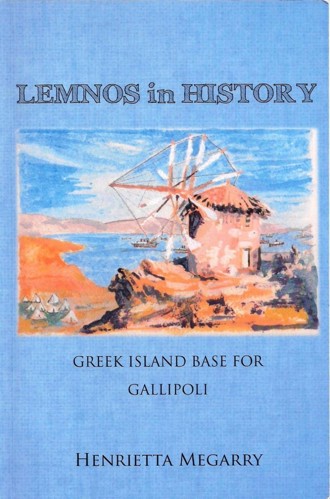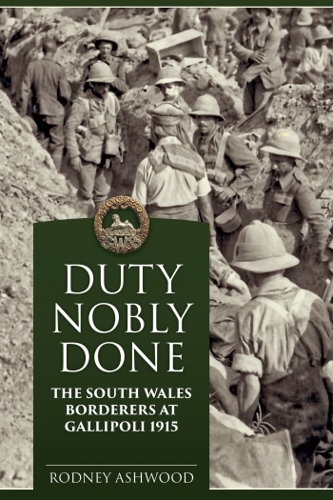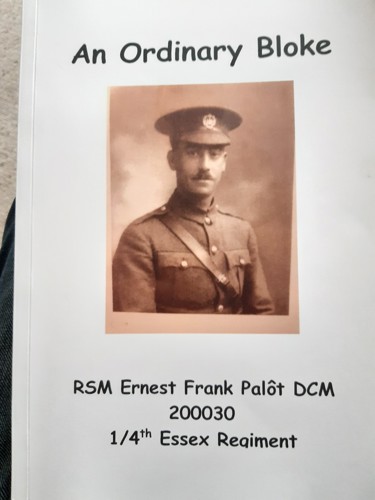The President’s Book Award 2023
After the success of the inaugural competition in 2022 the Gallipoli Association repeated the event this year.

Gallipoli Association President Christopher Fagan presents first prize in the 2023 Award to Henrietta Megarry.
The Trustees are seeking to recognise and reward historians who have produced their own book on a relative who served in Gallipoli or one based on research on their local community.

First prize: Lemnos in History, Greek Island Base for Gallipoli by Henrietta Megarry, Honeybee Books, 2021, 258pp.
The book is a history of the Island of Lemnos but with a focus on the time it was occupied by the Allies as part of the Gallipoli campaign. The author describes the arrangements that were put in place by the military, the arrival and departure of troops and naval events around the island. Half of the book is given over to describing the medical facilities on the island and hospital ships. She describes the experiences of hospital staff and the sick and wounded. She concludes with summarising what happened to the island once the Allies had left and during the rest of the war. There are four maps. There are 44 photographs. Some are of the island pre 1915 but most relate to the campaign. The writing is clear and informative. There is a useful list of abbreviations and alternative place names. The author includes a number of poems. She uses a wide range of primary and secondary sources in her analysis. The former include official documents, diaries and newspapers, including some from Australia and New Zealand. The list of secondary sources used is extremely impressive, including theses, articles and books. These include Greek and Turkish writing. Many people will be interested in this history of Lemnos, particularly those who have travelled or are travelling there and those that have an interest in the Gallipoli campaign.
Available from Amazon and online from the Great British Book Shop www.thegreatbritishbookshop.co.uk

Second prize: Duty Nobly Done: the South Wales Borderers in Gallipoli, Rodney Ashwood, Helion, 2017, 336pp.
This is a detailed study of the history of the two battalions (2nd and 4th) of the South Wales Borderers during the Gallipoli campaign. It includes a very detailed account of the regular 2nd Battalions service with the 29th Division, including the landings, Krithia and Gully Ravine. The author goes on to detail the involvement of the 4th Battalion at Suvla. He concludes with a chapter on old comrades organisations and an epilogue containing details of the later lives of some of the key characters. There is a good introduction to the campaign in chapters 1 & 3 and there is a very interesting history of the regiment in chapter 2, including the involvement of the 2nd Battalion in the capture of Tsingtao. The book is well written with a readable style. There are a number of photos, mainly portraits of officers before they went to the peninsula and of officers and other ranks after the war. There are a number of photos taken in the peninsula. There are 18 maps in total, some produced specially for the book and some copies of maps drawn in the field. There are four very good appendices detailing officers and enlisted men killed in the campaign, from both battalions. There is a useful timeline at the beginning of the book. As well as his own extensive knowledge, the author uses a range of sources, some from the SWB Museum. He makes extensive use of the diary of various officers. He uses a service record of the 4th battalion written anonymously after the war and the official war diaries of both battalions. Use is made of a many secondary sources, including histories of the regiment. The book adds to our knowledge of the campaign and would also be of interest to students of the Great War and military history enthusiasts generally.
Available directly from Helion and Amazon.

Third prize: An Ordinary Bloke: RSM Ernest Frank Palot, DCM, 200030, 1/4th Essex Regiment, Iain Palot, self-published, 2019, 140pp.
The book is a biography of the author’s grandfather, who served in the 4th Battalion of the Essex Regiment. He was a Territorial and saw service in Gallipoli, Egypt and Palestine. It is based on his letters and diaries, supplemented by a range of sources, including a commentary by the author. EFP, as the author calls him, was promoted to RSM, survived the war, was awarded the DCM and died in 1963. There are also letters from relatives and from some of his comrades. The letters and diary extracts convey a great deal of factual information. The letters are supplemented by a good commentary by the author and a wide range of other sources. There are a number of maps, which help explain the campaigns. There are numerous photographs, some from the author’s private collection. These include photographs from the campaign, of artefacts, posters, medals and even packets of Woodbines. The author also includes photographs of official documents relating to EFP. The author uses a number of primary sources to supplement the biography and includes some poems. The lively style of the letters and diaries and the author’s crisp commentaries make the book of interest to military history enthusiasts and students of World War One. The book is self-published and currently available in an electronic version. Anyone interested should email Ian Binnie on [email protected]
Also highly recommended: The Lost Sons of Penycae: Remembered in the heart of a small Welsh village, Barry Jones

Available from Amazon
